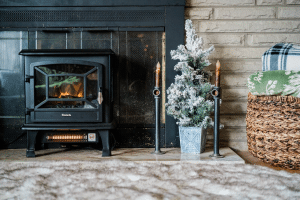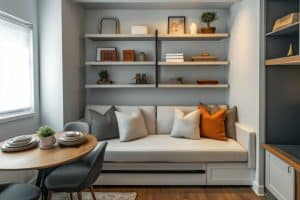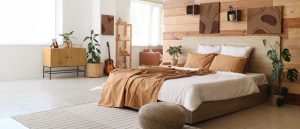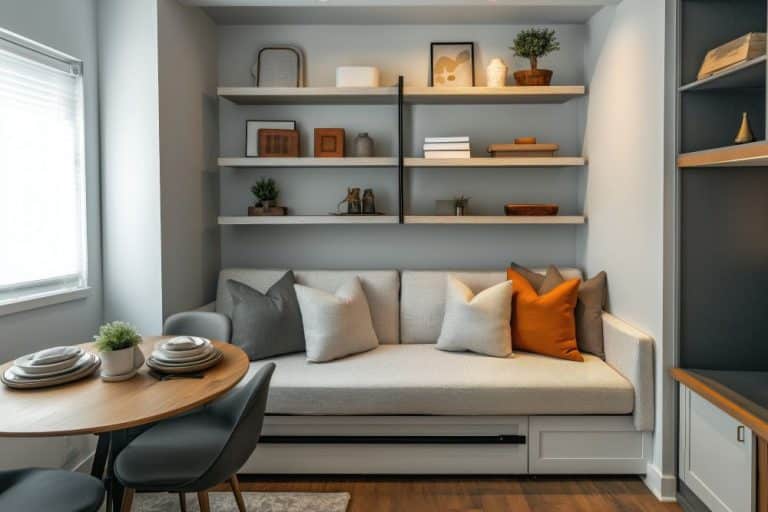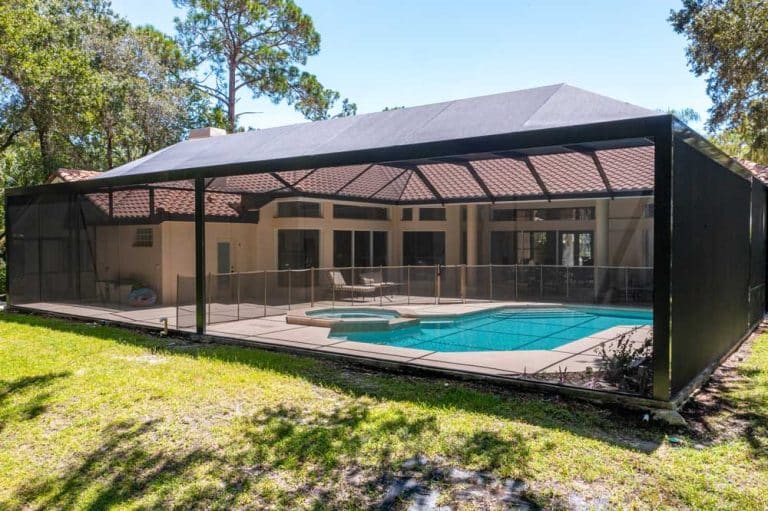Breaks from tests, essays, and long hours on screens matter for balance. Some students play sports, others practice music or theater after classes. A growing group grabs paint, drills, and peel-and-stick wallpaper for hands-on fun. Small home projects fit tight schedules and deliver quick, visible results.
Shifting a dresser, repainting a corner, or building a shelf feels rewarding fast. Early in the journey, many learners seek clear guides, examples, and simple room layouts. A site like SpeedyPaper can spark layout ideas from clean, well-formatted papers. With a steady plan, a weekend build teaches problem-solving and teamwork. It can also train creative thinking and grow imagination beyond daily classroom routines.
These ideas work in dorms, shared apartments, or a busy family home. Short projects break stale habits formed by constant study and repetitive online tasks. They also deliver useful skills that support adult life after grades and finals. Students see ideas become real objects, which boosts pride, ownership, and steady motivation for months ahead.
Why Home Projects Fit A Student’s Routine
Many feel their calendars are already full with classes, clubs, and jobs. That is why projects must be short, affordable, and flexible to attempt. A folding shelf, a mason-jar lamp, or chalkboard paint fits a single Saturday. The narrow time box lowers pressure and produces an immediate sense of progress.
Tools are easier to borrow now through campus shops and community makerspaces. Many makerspaces lend drills and saws, while discount stores sell starter tool kits. Spending stays below a textbook when friends split supplies and share costs. Working in small stages builds steady wins that strengthen confidence each week.
The process trains planning, testing, and adjusting, much like a clear science lab. Bright colors add energy, yet careful steps keep safety and neatness in mind. Home spaces become living lessons about measuring, budgeting, and safe tool practice. No other hobby pays the mind, the hands, and the room so directly.
Dorm Desk Refresh: Big Payoff In A Small Footprint
Dorm desks are plain, durable, and nearly identical across floors and halls. Turning that blank surface into a studio is a safe, rewarding start. First, clean the top and add removable contact paper for color within the rules. Next, build a simple hutch from pre-cut pine boards and sturdy metal brackets.
The raised shelf lifts books, freeing space for drawing or focused laptop work. Mount LED strips beneath the hutch to create a soft glow for studying. The gentle light reduces eye strain during late sessions and long reading blocks. Coat side panels with magnetic primer so photos and reminders attach without tape.
Measure carefully; every cut stays small enough for a basic hand saw. All parts can be unscrewed and packed when it is time to move. The refresh proves that restricted housing can still support style and better workflow. It strengthens problem-solving while protecting budgets and keeping roommates content and calm.
DIY Storage Ideas That Wake Imagination
Clutter harms focus, yet collections often grow faster than closets in student rooms. Custom storage tames mess while feeding play, experimentation, and design sense each day. A classic starter build is stackable wooden crates mounted on smooth swivel wheels. Sand, stain, and stencil the sides so every crate becomes rolling art.
Pegboards behind a door let hooks, cups, and mini shelves slide freely. Use bright zip ties to secure accessories and avoid nails in thin drywall. Even old shoe organizers can convert into hanging stations for chargers and earbuds. Label pockets to keep cables sorted by device, class, or daily routine needs.
These choices show creativity growing through simple, friendly engineering decisions at home. As layouts shift through a semester, tiny tweaks reshape movement and habits noticeably. Students watch how design changes improve speed, calm, and daily efficiency around tasks. Order stops feeling like a chore and becomes a flexible, personal art practice.
Painting Spaces And Spirits: A Quick Color Primer
Fresh paint shifts mood faster than new furniture inside most study corners. Before brushes touch walls, learn a few basics about feeling and color. Cool blues and greens calm rapid thoughts during long nights of focused review. Warm yellows wake sleepy brains and support alert reading in early mornings.
Begin with one taped accent wall so dorm policies stay friendly and safe. If paint is banned, lean large canvas panels to add color without fines. Free virtual design apps allow quick tests and build basic digital planning skills. Mix small sample jars to see how primary shades combine into fresh tones.
These trials turn art class theory into a practical understanding you can apply. Paint is cheap, simple to cover later, and encourages brave, ongoing experiments. New color stories break stale study habits and refresh motivation across the week. Friends may linger longer, collaborate, and share ideas within a brighter, calmer space.
Upcycling To Shift Old Study Patterns
Upcycling turns cast-off items into better forms, saving money and helping the planet. For students, it challenges routines and sparks fresh outlooks during busy academic weeks. Try a worn chair rescued from the curb and give that piece new life. Sand the frame, then wrap the seat with patterned cloth for a lively update.
An empty cereal box becomes a cable tunnel wrapped in bright duct tape art. Glass jars from pasta sauce transform into tiny terrariums with shade-loving succulents inside. Working with mixed materials teaches how textures respond to glue, paint, and heat. Because supplies are free or cheap, mistakes feel smaller and less frightening overall.
Organize swap nights where everyone brings one “useless” item and trades inspiration. People laugh, learn, and build skills while keeping extra waste out of landfills. These gatherings prove that a creative outlet can also serve neighbors and shared spaces. Making new value from scraps trains eyes to spot options where others quit.
Outdoor Corners For Study And Unwinding
Not every plan belongs inside four walls because fresh air resets a tired mind. A small outdoor corner can recharge faster than another hot mug of coffee. Backyards suit string lights hung between trees with a low wooden pallet deck. Add washable pillows, and the corner becomes a quiet reading lounge quickly.
City balconies can shine with herb planters that bring color and a gentle scent. Folding camp stools create a pop-up patio that stores flat between every use. Building outdoors teaches weatherproofing and durability that transfer to later projects. These lessons apply to future jobs and help with caring for long-term homes.
Natural sounds lower stress hormones, helping the brain absorb material during study. Short sessions outside mix review with calm breathing and steady sunlight exposure. Students practice routines that balance productivity and wellness within ordinary weeks. The result is a portable refuge that turns any open corner into a schoolhouse light.
Balancing Money And Imagination
Tight budgets often hold students back from starting simple home improvements. Limits can fuel creativity by steering choices and trimming waste from the start. Track every expense in a plain spreadsheet or an easy budgeting phone app. Watching numbers rise prevents impulse buys that drain cash at craft stores.
Collect coupons, visit reuse centers, and scan local groups for leftover paint. Search neighborhood posts where people give away scrap lumber and surplus tiles. Ask friends to share tools and turn projects into helpful, social meetups. Plan on paper before shopping and list cuts to reduce material waste. When costs spike, build a cardboard prototype to test measurements and fit. Small swaps like new knobs or peel-and-stick tiles refresh whole rooms cheaply.
Target upgrades that stay under ten dollars while creating a clear change. Set a fixed project jar and drop spare change into it each day. Saving becomes playful instead of strict when the jar fills steadily. Matching smart money moves with art goals teaches daily budgeting in practice.
Carrying The Outlet Into Life After School
Graduation ends exams, yet personal growth and handy habits continue for decades. Starting early lets students carry a practical hobby into their homes after school. Apartments may grow, tool kits expand, yet the mindset stays steady and simple. Observe needs, imagine options, choose a plan, and make careful improvements.
Skills in measuring, sanding, and wiring lamps translate to fixing taps or shelves. Building a child’s play table later will feel natural because the basics are familiar. Turning ideas into physical objects supports mood and calm during demanding seasons. Friends who once crammed together can reunite for weekend painting and small repairs.
Paint rollers replace notebooks while laughter replaces test stress for a welcome reset. Local community centers often host volunteer repair days that welcome eager helpers. Alumni give back, strengthen neighborhoods, and keep their talents sharp through service.
In this way, a creative outlet grows into shared care for nearby neighbors. The cycle of learning, making, and teaching keeps curiosity active after lectures.
Quick-Start Checklist For First-Time DIYers
To close, here is a clear checklist anyone can follow before using tools. First, set one focused goal, such as installing two floating shelves above the desk. Second, measure twice and record numbers in a phone note for safekeeping and clarity. Third, gather every tool in advance because last-minute store runs kill momentum quickly.
Fourth, protect floors and hands with drop cloths and a sturdy pair of gloves. Fifth, read or watch a single tutorial from start to finish before any cuts. Sixth, test paint, stain, or glue on scrap pieces rather than the final build. Seventh, schedule short breaks because a tired mind misreads instructions and creates mistakes.
Eighth, invite a friend to scan for hazards, since four eyes beat two. Ninth, clean up when the last screw is tight to keep tools in shape. Tenth, celebrate by taking photos, sharing results, and noting wins and flops for growth. Reflection locks in lessons and prepares your mind for the next challenge.




